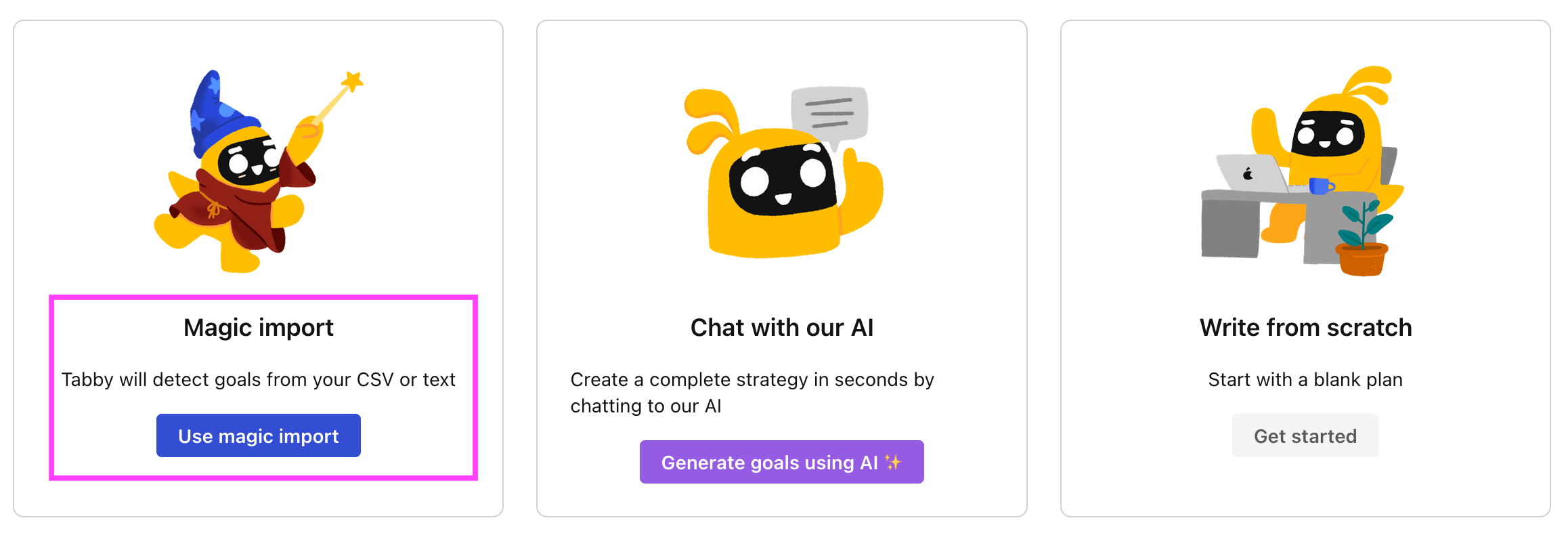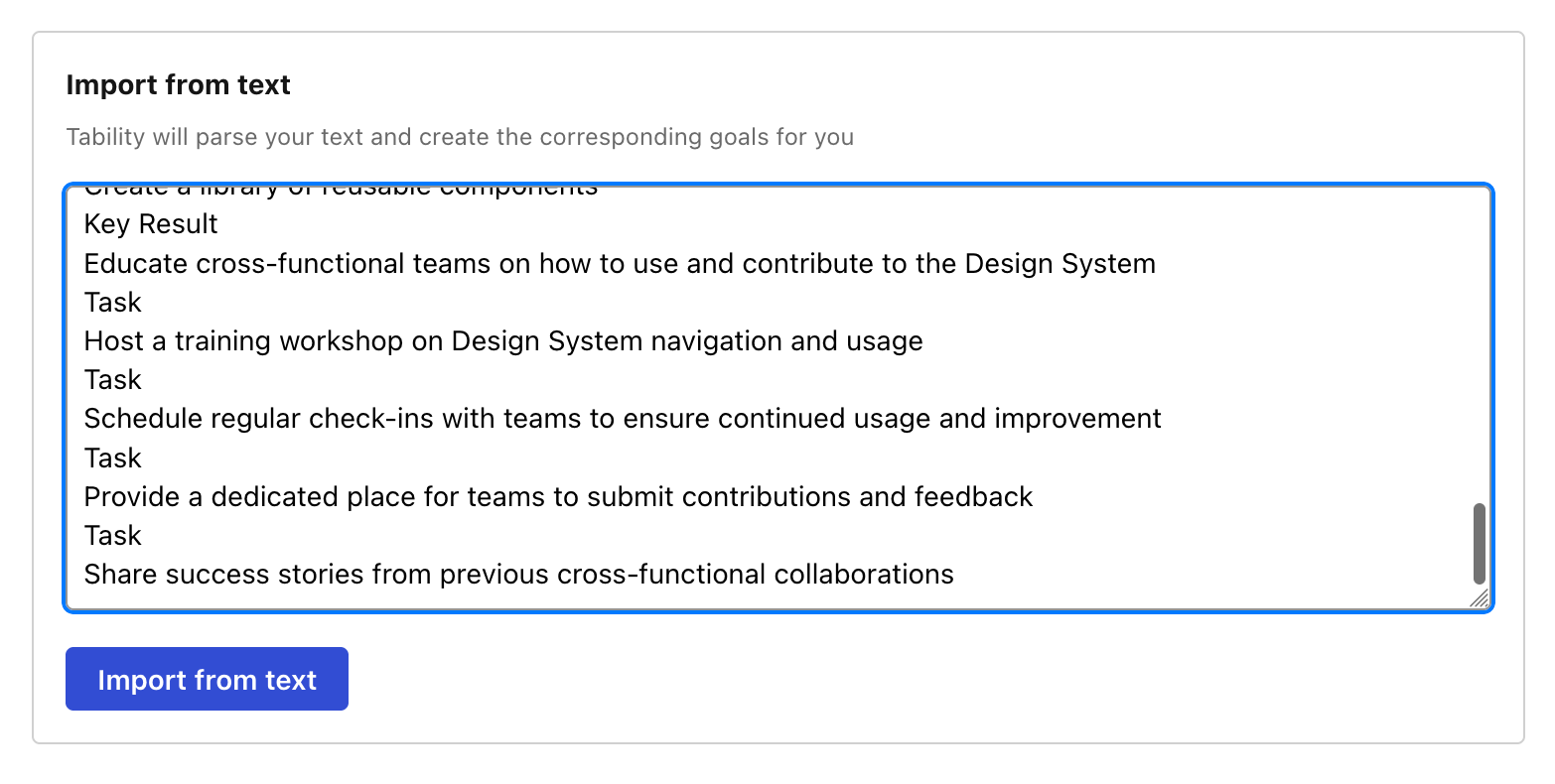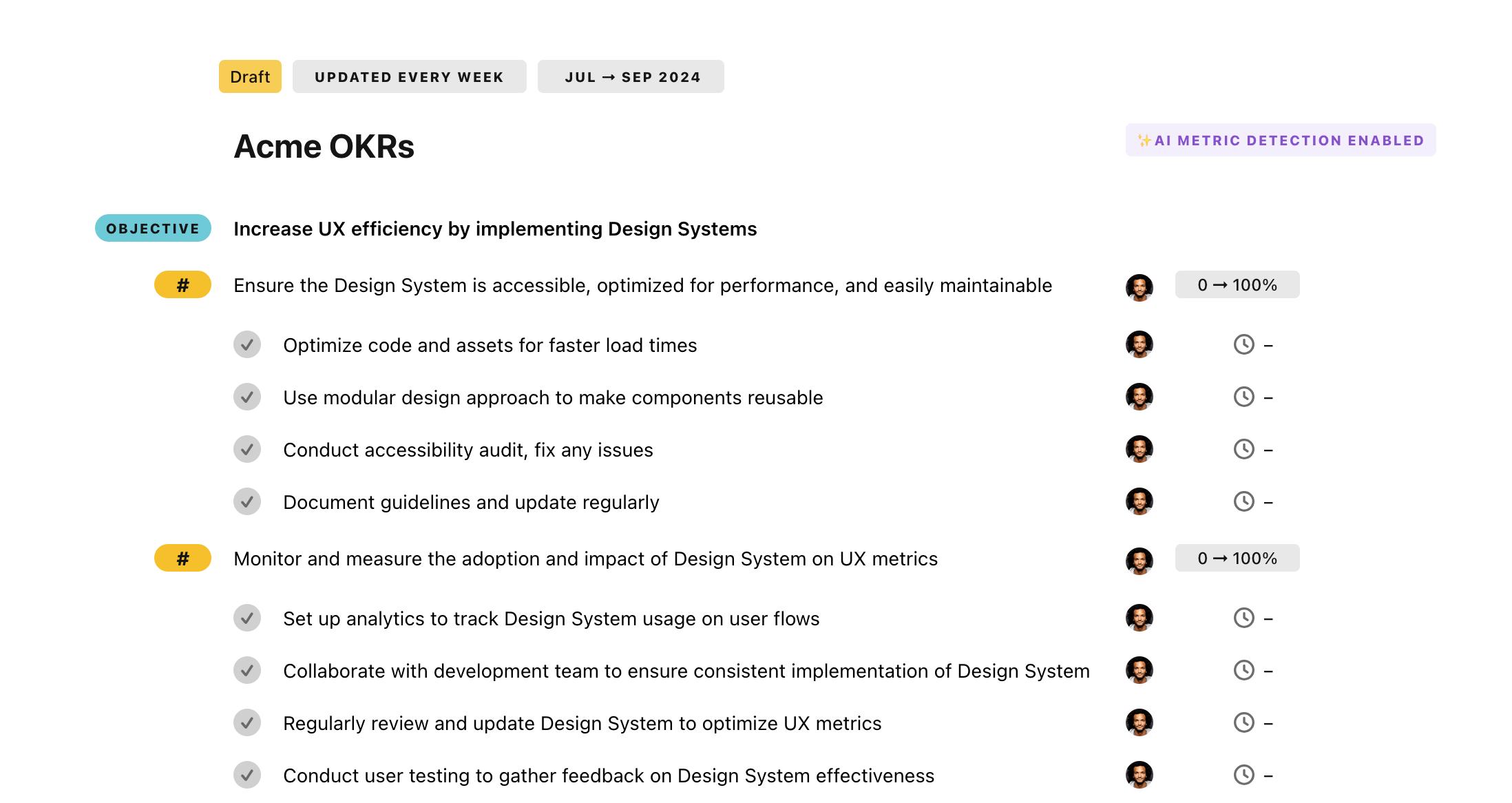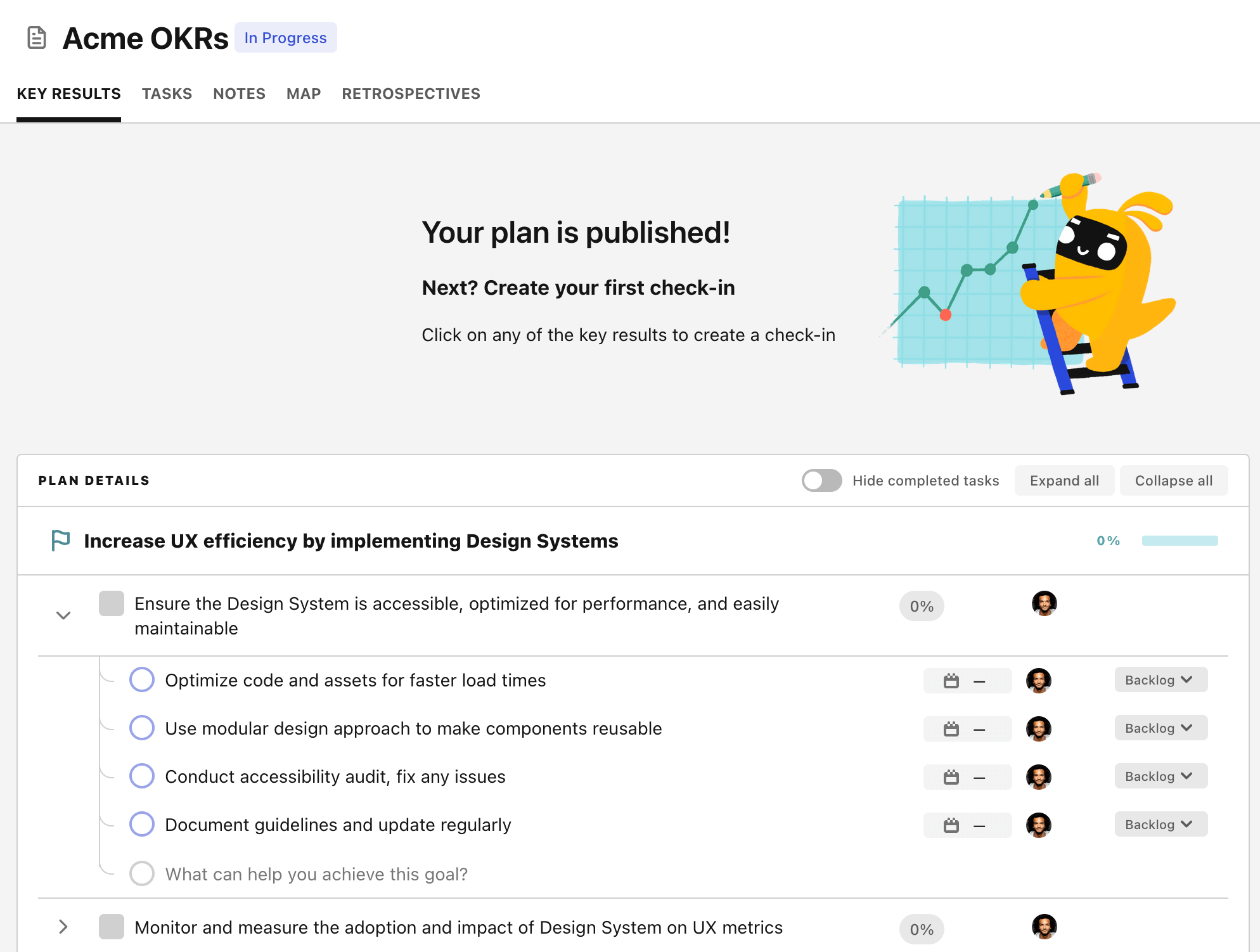OKR template to enhance ATM availability through sustainable power
Your OKR template
A key action step in this OKR is the installation of green power sources to all targeted ATMs. This implies researching, purchasing, and installing the most appropriate green power technologies in our ATMs, a mission that will be considered 100% successful when all ATMs are functioning with green energy.
To ensure the effectiveness and efficiency of this approach, the team will embark on research to identify the most suitable power sources. The team will explore at least five green power alternatives before making the best selection. They must extensively research each possible alternative to come up with the best option.
The success of this initiative is linked to various responsibilities including evaluating the energy requirements of each ATM, testing installations, and documenting findings. Each of these tasks is crucial to ensuring that the transition to green power not only improves ATM availability but is also sustainable.
ObjectiveEnhance ATM availability through sustainable power
KRAchieve a reduction of power-related ATM downtime by 25%
KRSuccessfully install green power source to 100% of targeted ATMs
Purchase and install appropriate green power sources
Conduct tests to ensure successful installation
Evaluate required energy levels for each target ATM
KRResearch and select the most efficient, green power source by evaluating 5 alternatives
Identify and list down five green power alternatives
Research thoroughly on each power alternative
Choose the most efficient green power source
How to edit and track OKRs with Tability
You'll probably want to edit the examples in this post, and Tability is the perfect tool for it.
Tability is an AI-powered platform that helps teams set better goals, monitor execution, and get help to achieve their objectives faster.
With Tability you can:
- Use AI to draft a complete set of OKRs in seconds
- Connect your OKRs and team goals to your project
- Automate reporting with integrations and built-in dashboard
Instead of having to copy the content of the OKR examples in a doc or spreadsheet, you can use Tability’s magic importer to start using any of the examples in this page.
The import process can be done in seconds, allowing you to edit OKRs directly in a platform that knows how to manage and track goals.
Step 1. Sign up for a free Tability account
Go tohttps://tability.app/signup and create your account (it's free!)
Step 2. Create a plan
Follow the steps after your onboarding to create your first plan, you should get to a page that looks like the picture below.

Step 3. Use the magic importer
Click on Use magic import to open up the Magic Import modal.
Now, go back to the OKR examples, and click on Copy on the example that you’d like to use.

Paste the content in the text import section. Don’t worry about the formatting, Tability’s AI will be able to parse it!

Now, just click on Import from text and let the magic happen.

Once your example is in the plan editor, you will be able to:
- Edit the objectives, key results, and tasks
- Click on the target 0 → 100% to set better target
- Use the tips and the AI to refine your goals
Step 4. Publish your plan
Once you’re done editing, you can publish your plan to switch to the goal-tracking mode.

From there you will have access to all the features that will help you and your team save hours with OKR reporting.
- 10+ built-in dashboards to visualise progress on your goals
- Weekly reminders, data connectors, and smart notifications
- 9 views to map OKRs to strategic projects
- Strategy map to align teams at scale